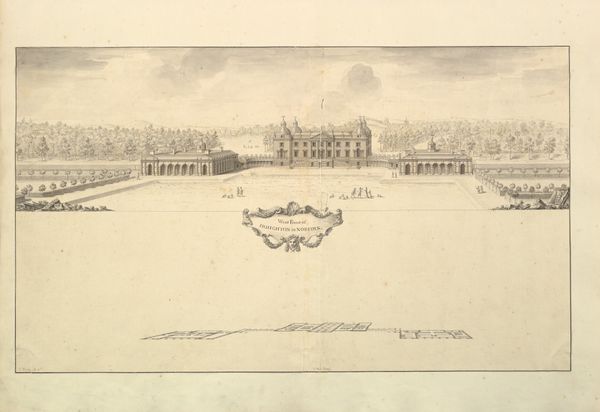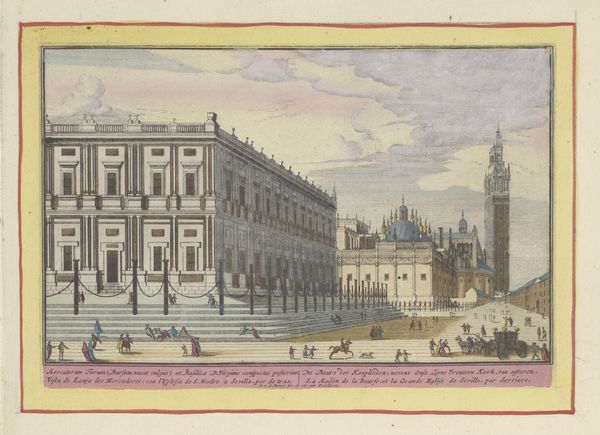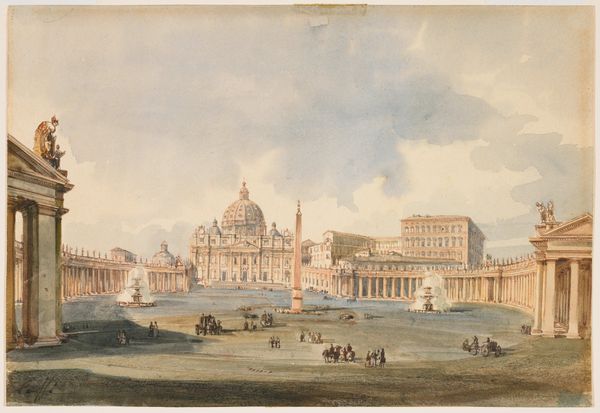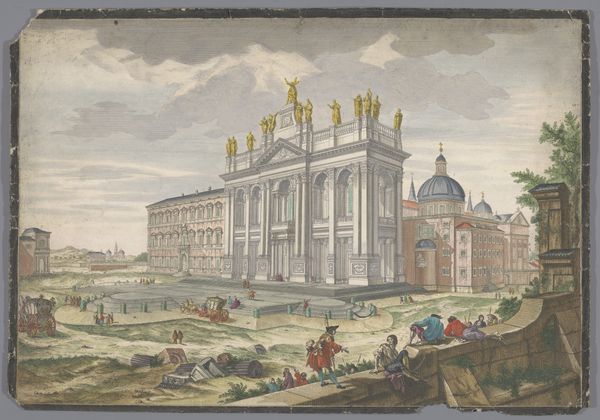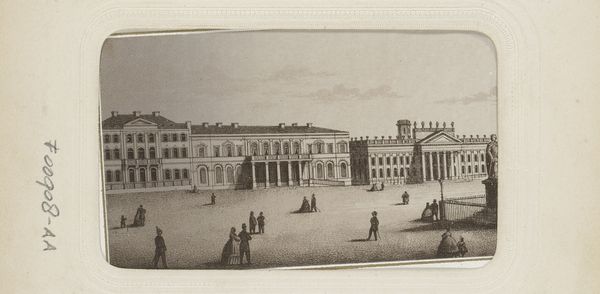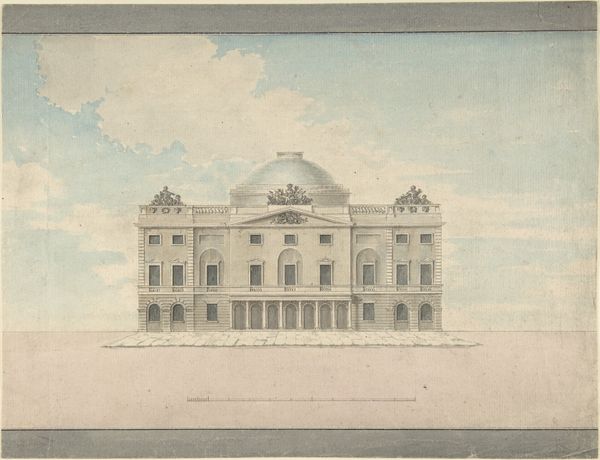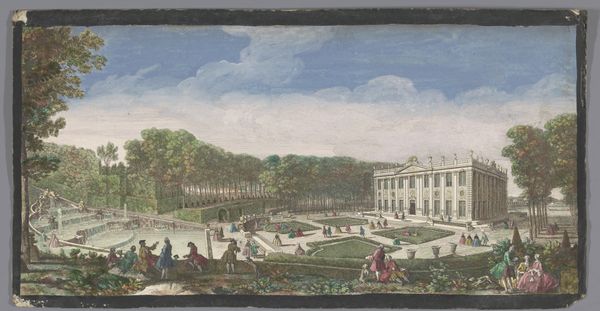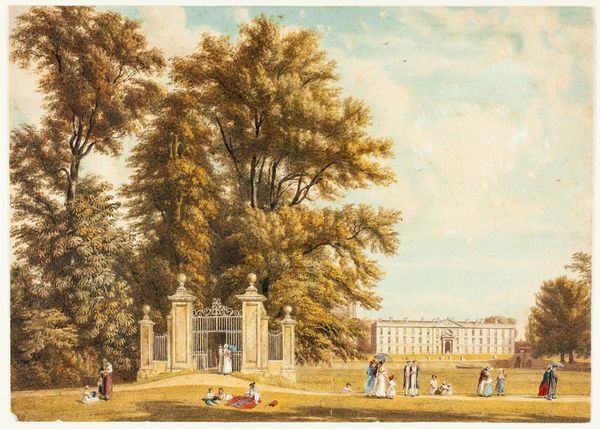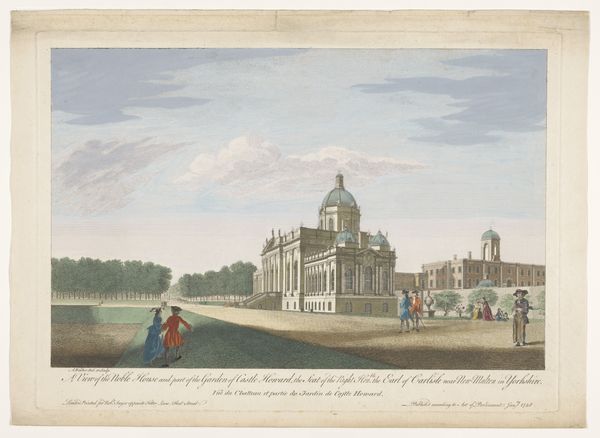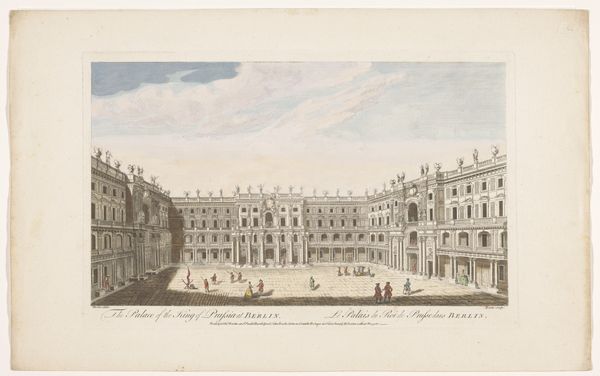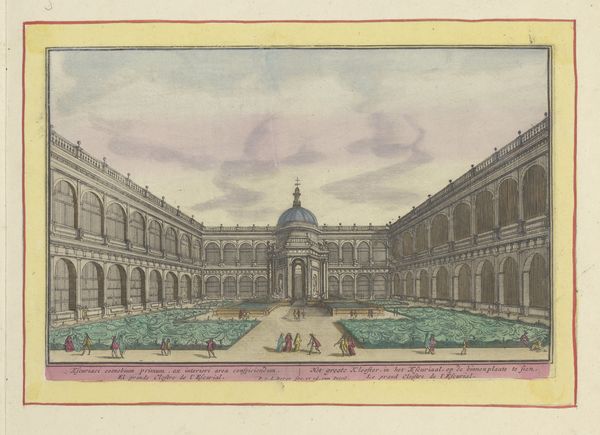
The Façade and Suroundings of a Cathedral for Berlin 1827
0:00
0:00
drawing, watercolor, architecture
#
drawing
#
neoclacissism
#
landscape
#
watercolor
#
cityscape
#
watercolor
#
architecture
Dimensions: sheet: 16.2 x 26.8 cm (6 3/8 x 10 9/16 in.) image: 14.9 x 25.5 cm (5 7/8 x 10 1/16 in.)
Copyright: National Gallery of Art: CC0 1.0
Curator: Let’s consider Karl Friedrich Schinkel’s “The Façade and Surroundings of a Cathedral for Berlin,” a watercolor drawing from 1827. Editor: My first impression is the drawing's formality, almost a kind of serene chill, in the pale blue and greys. The architecture, so carefully rendered, feels less like a lived space and more like a statement. Curator: Exactly. Schinkel was a key figure in Prussian Neoclassicism. Note how the cathedral’s façade is inspired by classical Greek temples. Those Doric columns and the carefully balanced proportions speak to a yearning for order and a harkening back to an idealized past, to principles of civic virtue. Editor: Yes, the materials suggest aspiration and, well, consumption. This watercolor must have been displayed to generate excitement about the building and secure funding and public support. You see how the rendering has such clear precision and evenness? The production process wasn't about material exploration or expression but communicating a particular vision to patrons. Curator: And the symmetry contributes to that sense of idealized permanence. The cathedral as a symbol of enduring faith, power, and cultural identity. Note also the presence of figures. Do you find how their depiction reinforces a certain order and social hierarchy within this projected space? They serve to magnify the building itself and make it feel, at least in the imagination, grand. Editor: The subdued palette, even the limitations inherent in watercolor technique for such architectural precision, adds a layer of remove. It highlights the proposed structure's status as a symbol more than a functional building made of stone, brick, labor, and cost. This isn't the earthy reality of building but the aspirational plan on paper, deliberately framed for impact. Curator: That’s very insightful. It reminds me that these architectural drawings are always more than mere plans; they embody cultural and political aspirations. In Schinkel’s Berlin, Neoclassicism aimed to link the city to a glorious past, constructing a new civic religion based on rationalism and aesthetic discipline. Editor: A meticulously planned symbolism reflected in the medium itself and the entire presentation. I find that tension fascinating – the inherent qualities of watercolor used to depict this heavy and seemingly immutable facade. Curator: It's a compelling contradiction, indeed. Editor: Agreed. It seems a fruitful avenue for further investigation.
Comments
No comments
Be the first to comment and join the conversation on the ultimate creative platform.

